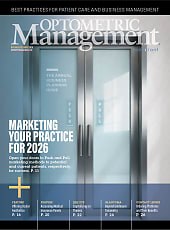
A new report from The Vision Council (TVC) indicates a seasonal uptick in consumer spending on optical products and services during the first quarter of 2025. The findings, released in the Consumer inSights Q1 2025 report, provide an overview of U.S. adults’ behaviors and attitudes toward vision correction, managed vision care, eye exams, prescription eyewear, reading glasses, and nonprescription sunglasses.
According to the data, spending on vision care products increased compared to the last quarter of 2024. This trend aligns with seasonal patterns observed in recent years, which TVC attributes in part to the reset of managed vision care benefits at the beginning of each year.
In Q1 2025, the proportion of eyeglass purchasers spending $200 or more rose slightly from 27% to 28%. Contact lens buyers spending over $200 also increased from 14% to 17%. Spending on nonprescription eyewear, including reading glasses and sunglasses, also reached a three-year high, with 34% of consumers spending $100 or more—up from 28% in Q4 2024.
“This quarter’s data reflects a continued commitment from consumers to invest in their vision health, with spending trends aligning with seasonal patterns and the ongoing importance of managed vision care,” said Alysse Henkel, Vice President of Research and inSights at The Vision Council. “While consumer spending ticked up slightly this quarter, that shift reflects expected seasonal patterns tied to the start-of-year reset in benefits. We’re closely monitoring consumer sentiment in our survey each month as tariffs and broader economic uncertainties evolve.”
More key takeaways:
- The share of contact lens consumers purchasing online rose from 35% in Q4 2024 to 39% in Q1 2025.
- Employer-sponsored managed vision care plan enrollment held steady at 47%, continuing a gradual decline from 50% in Q3 2024. This is offset by an increase in government-sponsored coverage, particularly among Baby Boomers transitioning into eligibility.
- Although 40% of eyeglass consumers spent less than $100, the percentage spending $200 or more continued to grow. Eye exam costs remained stable, with 67% of respondents paying under $50 and only 15% reporting costs above $100.
The full Consumer inSights Q1 2025 report, which includes more than three years of trended data, is available here as a complimentary download for members and for nonmembers to purchase.



